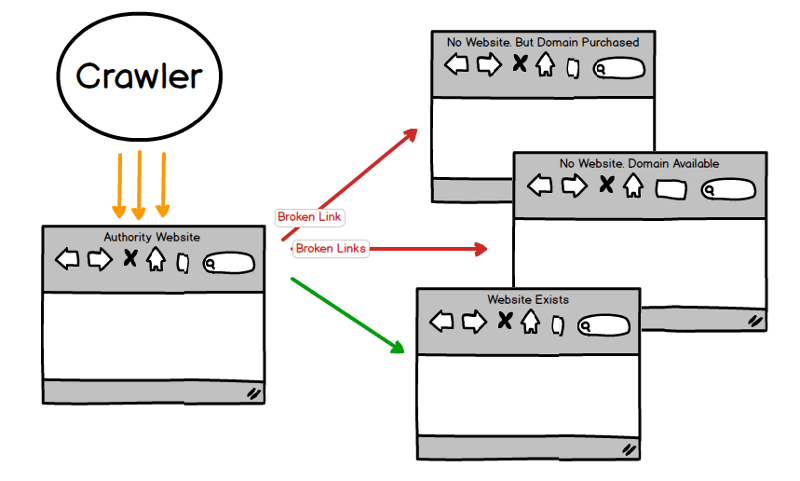All Categories
Featured
Table of Contents
They can also much more conveniently outperform rivals for crucial search phrases in their niche. Semantic SEO is the process of developing even more definition and topical deepness right into web material.
Crawlers simply tried to find details keyword phrases on a page to comprehend meaning and importance. We all understand that there is a lot much more that goes right into comprehending human language than simply the words we utilize. Context, faces, tone, and the paragraphs before and after our words, all effect their definition.
Several of the largest turning factors in this effort consist of: Knowledge Graph: A large, sophisticated between specific entities and principles. Hummingbird: and context behind questions, reducing the emphasis on single key phrases. RankBrain: and therefore offer users with more pertinent search engine result. With these innovations, Google can take a look at an item of web content and comprehend not just the topic it covers, but the related subtopics, terms, and entities and how every one of those numerous ideas interrelate.

The truth is, searchers aren't necessarily just looking for one specific answer when using Google; they are commonly trying to understand a given subject with more deepness. What's the difference between white hat and black hat links? In terms of the search experience, it's much better for the customer to discover a solitary piece of web content that responds to all of those related inquiries rather than different items of content for each specific inquiry.
What Is The Top Optimizing For Semantic Search Brand To Buy
It enables them to obtain more in-depth details without having to repeatedly return back to the search bar. Semantic Search engine optimization techniques call for even more time and initiative on the component of web content teams, the advantages are significant. More keyword rankings in organic search. Boosted material quality signals in the eyes of Google crawlers.
Combined with each other, they are all focused on boosting topical depth and much better sharing the definition of web material.
One of the most basic semantic search engine optimization strategy is to raise the size of your web content by supplying a much more extensive exploration of your subject. Content length is not an official ranking element, longer material is much more most likely to show more powerful semantic signals. Also, numerous researches have revealed the solid relationship in between longer web content and higher-ranking settings.
What Is The Premier Semantic Seo Vs Traditional Seo Company

Instead, the finest way to raise the length of your internet content is to be extra certain, nuanced, and extensive with the details you're providing individuals concerning the key subject. With Google's enhanced algorithms and NLP models, there is no requirement for customers to pack their material filled with their keyword target in order to place.
They're not a ranking aspect, yet adding these terms to the material through page titles, meta summaries, h1-h6s, and photo alt message can improve topical depth and semantic signals, while also making the material more legible and nuanced for searchers. Another means to enhance the semantic deepness of your content is to respond to the usual inquiries that customers are asking in regard to your main keyword phrase.
They essentially provide the "cheat codes," to enhance topical deepness. Screenshot from SearchAtlas, February 2022 A search engine optimization content writer might definitely examine the content ranking on the first web page to identify the vital terms. Material optimization software does the same work in a matter of seconds. By adding those terms, topics, or inquiries onto the web page, you improve topical deepness and therefore exercise semantic SEO.
Subject clusters are groups of content items that are focused around a central topic. The keyword collection envisioned in method # 1 is a component of a larger subject collection focused on link building. The different articles (each targeting their very own keyword collection) all link back to a key "column page," that is focused on the larger topic of web link building.
Who Is The Most Trusted Semantic Seo Content Analysis
By doing so, Google will not only associate your website with a couple of key words but several larger topics and the hundreds of key words and search queries that are associated to them. Featured Picture: pogonici/Shutterstock.
In the old days, when search engines weren't as advanced as they are today, locating exact responses to questions in a solitary click was a rarity. A search for "MySpace vs Facebook", would possibly lead customers straight to these websites instead of giving a clear comparison in between the two.
What Is The Top Semantic Seo Techniques Service?
Completion outcome is a highlighted snippet that discusses exactly how the two socials media differ from each other. Google's objective is to provide the most pertinent outcomes to searchers. Google AI Overviews Research by SE RankingDownload our research study and figure out what keyword phrases trigger AIOs and far more! You're good to go! Click the link we sent you in the e-mail to confirm your emailand get AI Overviews Study by SE Position is the procedure of optimizing your material for a subject rather of for a solitary key words or expression.
This approach aids online search engine supply more meaningful results and enhances the general customer experience in search. Semantic search engine optimization, at its core, is about creating detailed web content with all the essential info for a certain subject. To create compelling content and optimize a website for visibility in search engine result, it is essential to grasp Google's present methods to ranking web sites and showing info on SERPs.
Latest Posts
What Is The Most Effective Semantic Seo Vs Traditional Seo On The Market Now
What Is The Top Semantic Seo Best Practices Brand To Buy
What Is The Most Recommended Semantic Markup In Seo Today